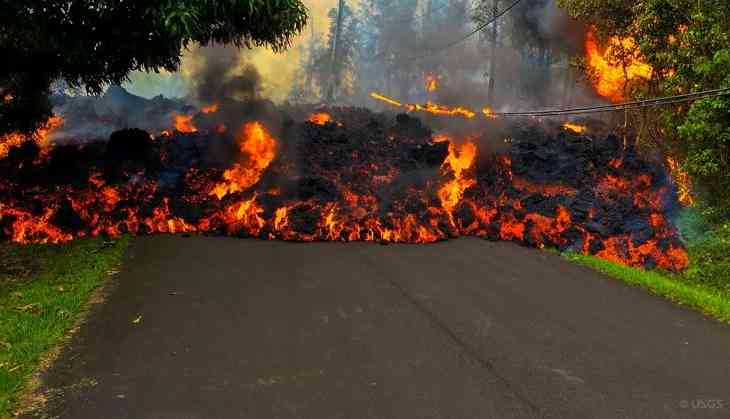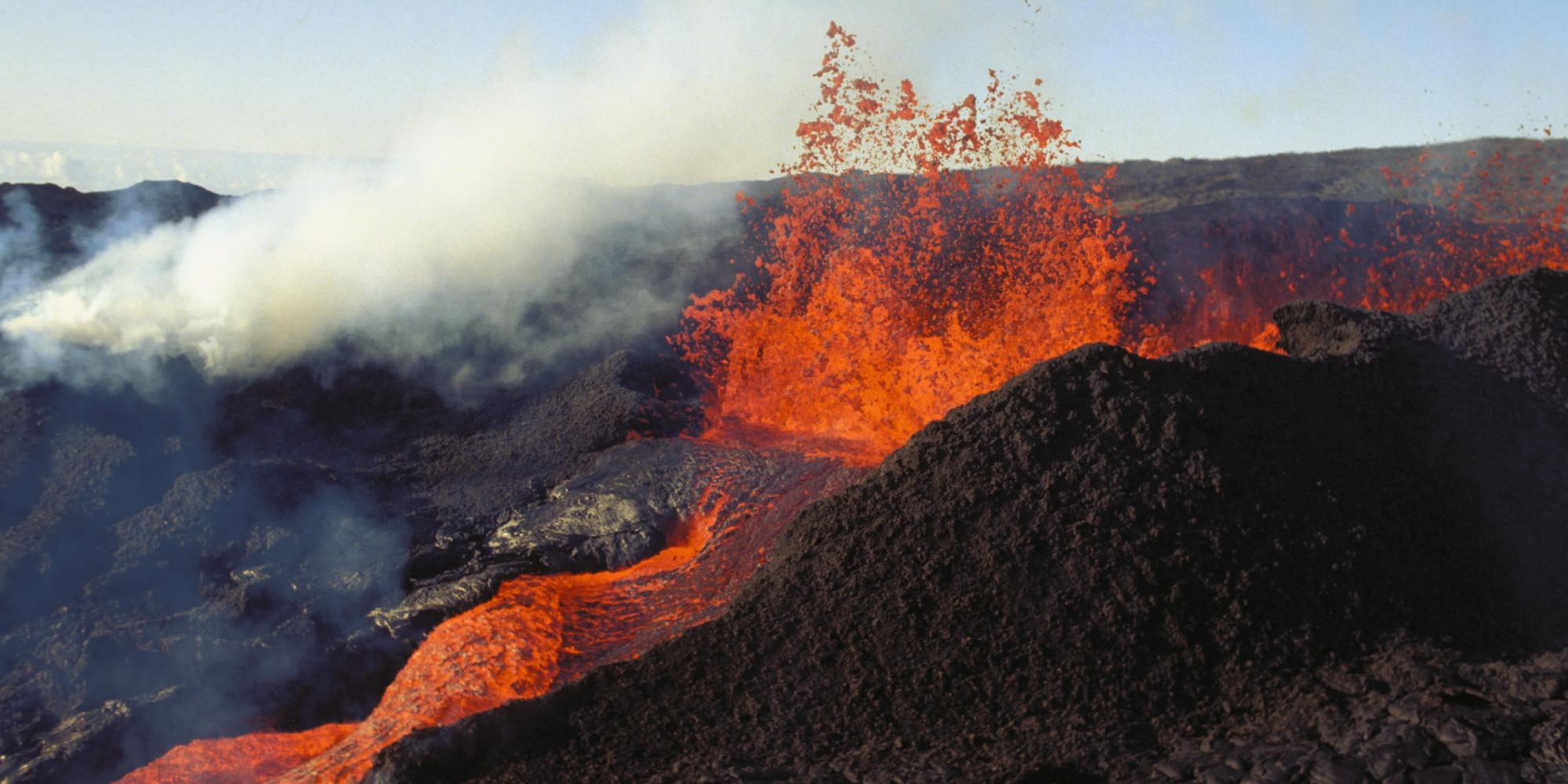Hawaii reports first serious injury from Kilauea Volcano as lava reaches escape routes; video inside

Kilauea volcano, one of the most active volcanoes in the world. It erupted two-week-ago and is still continuing. An aviation red alert was given because of the risks of ash plume blowing aircraft routes.
The disruption continues as the lava threatened to block a key Hawaii highway on Saturday that serves as an escape route for coastal residents, while the first known serious injury was reported from fresh explosive eruptions from the Kilauea volcano.
"A homeowner on Noni Farms Road who was sitting on a third-floor balcony got hit with lava spatter," said Janet Snyder, a spokesperson for the Office of the Mayor, County ofHawaii.
"It hit him on the shin and shattered everything there down on his leg," she said, adding that lava spatters "can weigh as much as a refrigerator and even small pieces of spatter can kill."
The lava has destroyed around four homes, molten rock from two huge cracks merged into a single stream, threatening to block escape routes.
The lava is expected to hit Highway 137 overnight if it kept up its rate and direction of flow, the County of Hawaii's Civil Defense Agency said.
Also Read: Hawaii Volcano Eruption and aftermath; dramatic visuals inside

The authorities is Hawaii are planning to open up a road that was blocked by lava in 2014 to serve as an alternative escape route should Highway 137 or another exit route, Highway 130, be blocked, Jessica Ferracane of the National Park Service told reporters.
The geologists have warned that hotter, fresher magma from Kilauea's summit would run underground and emerge some 25 miles east in the lower Puna district, where older, cooler lava has already destroyed 44 homes and other structures.
"Summit magma has arrived," U.S. Geological Survey scientist Wendy Stovall said on a conference call with reporters.

"There is much more stuff coming out of the ground and its going to produce flows that will move much further away."
Fountains of bright orange lava were seen spouting at least 20-feet high, and spewing rivers of molten rock on Saturday.
Scientists are expecting that the Volcano could spread ash and volcanic smog across the Big Island, the southernmost of the Hawaiian archipelago. As another large explosive eruption occurred around midnight, sending up a nearly two-mile-high ash plume (10,000 feet), according to the Hawaiian Volcano Observatory.
Thousands of residents have voluntarily left their homes due to life-threatening levels of toxic sulfur dioxide gas spewing from vents in the volcanic fissures.
Also Read: Shocking pictures of growing ash clouds by Kilauea volcano eruption in Hawaii
First published: 20 May 2018, 14:58 IST
